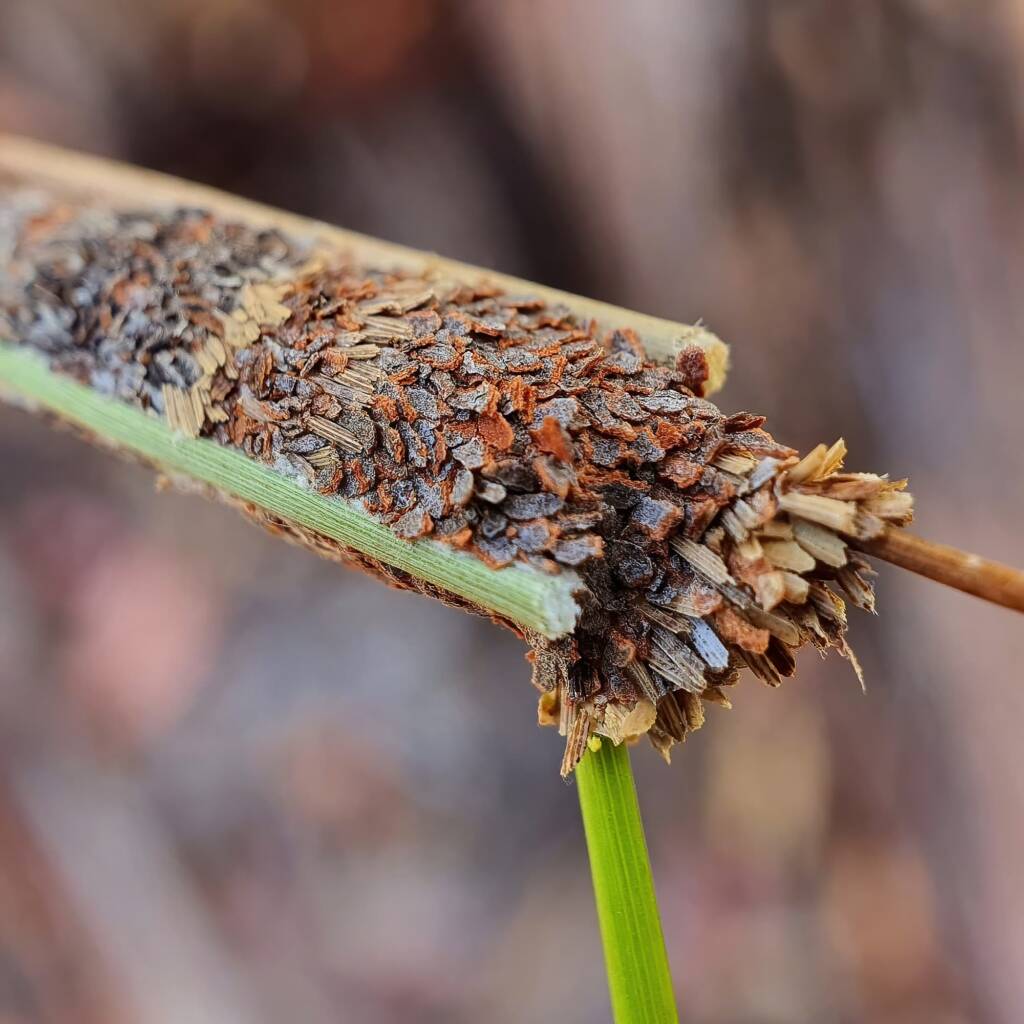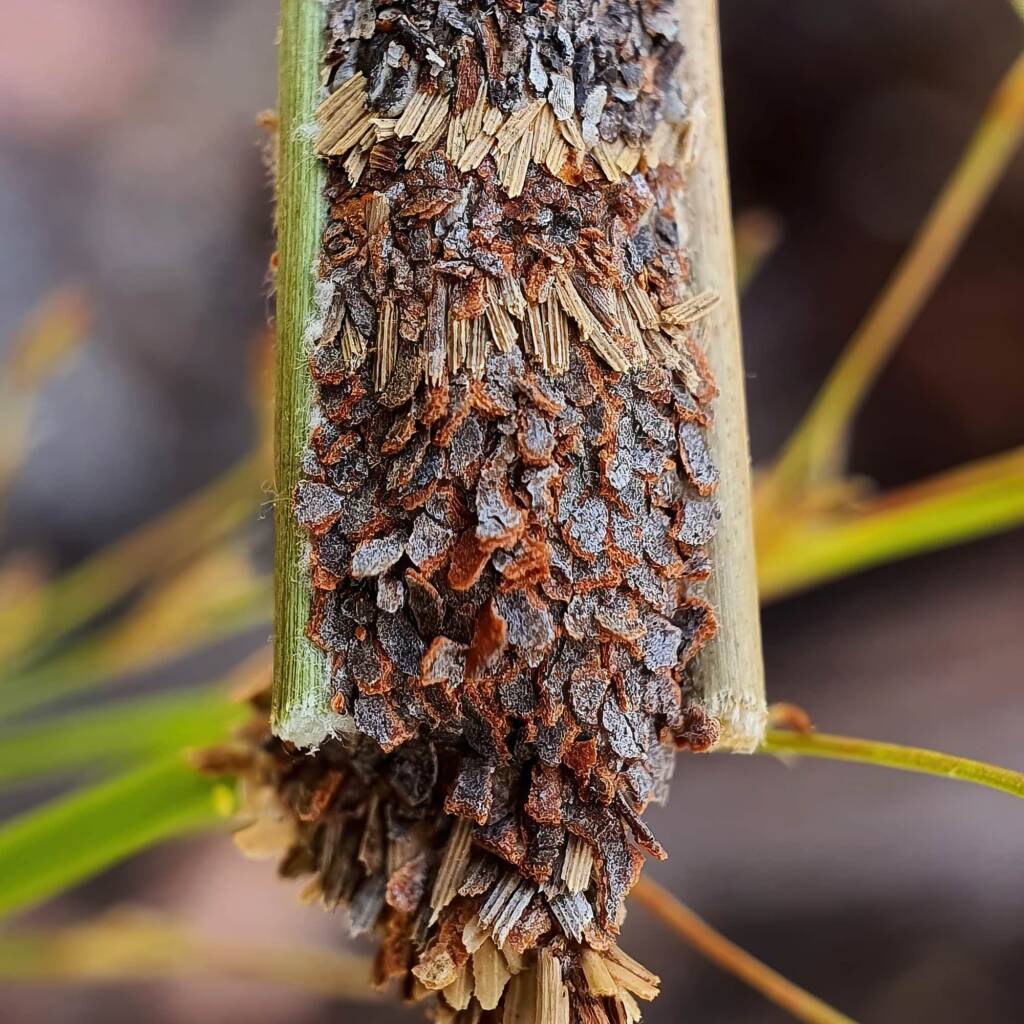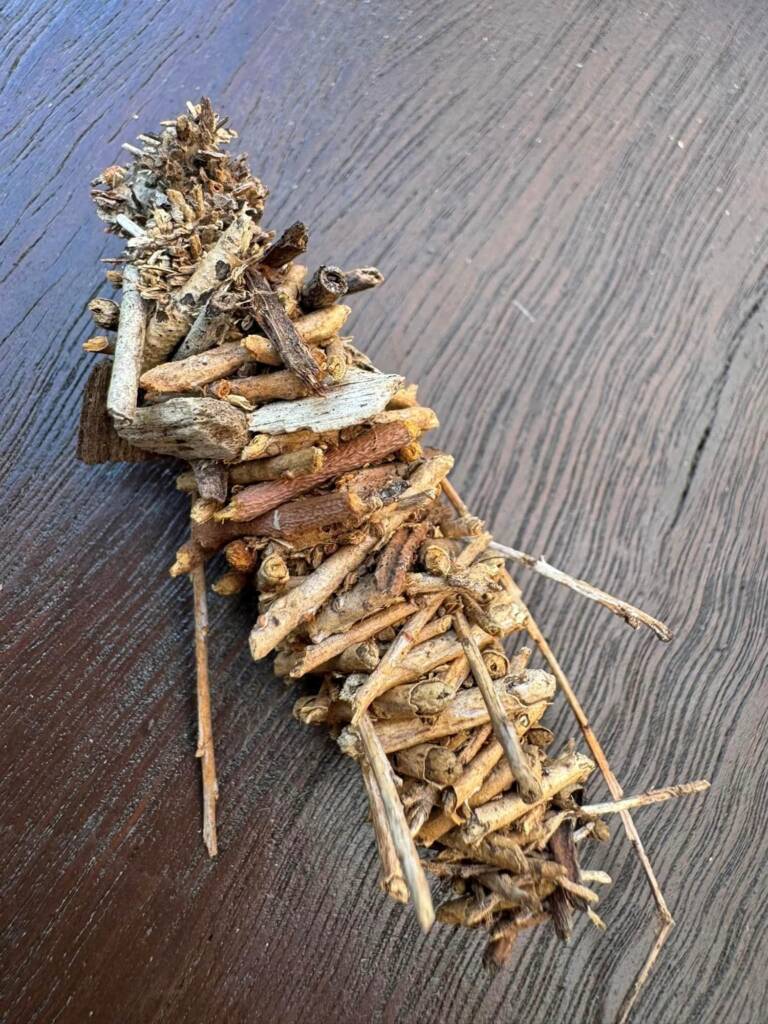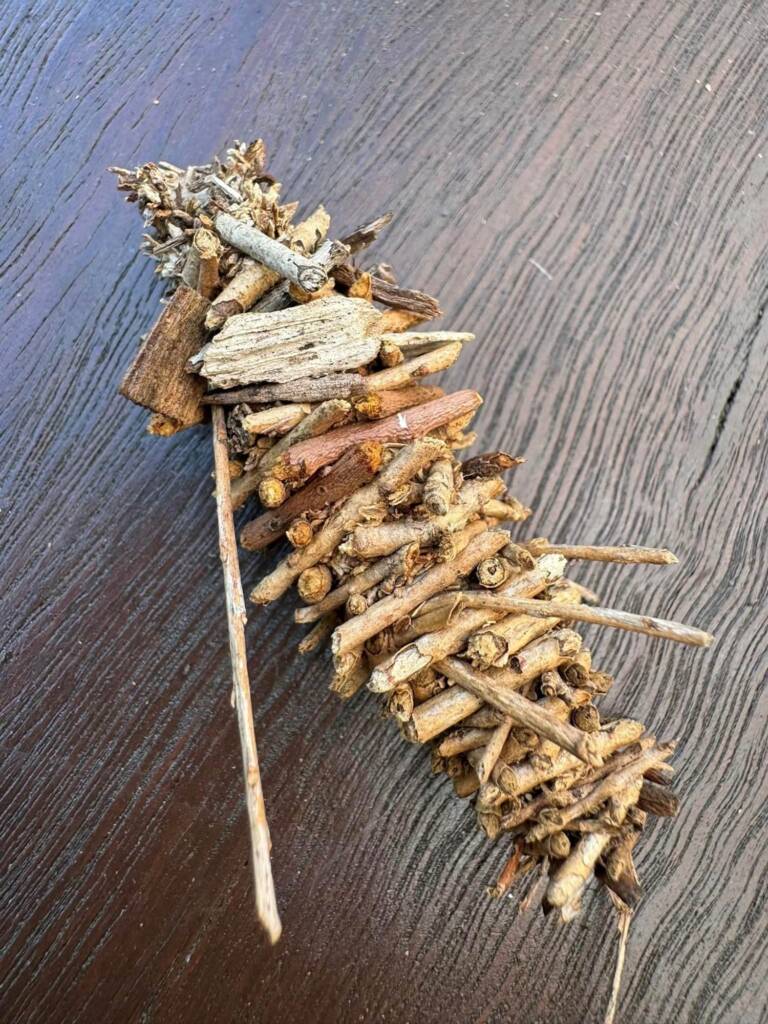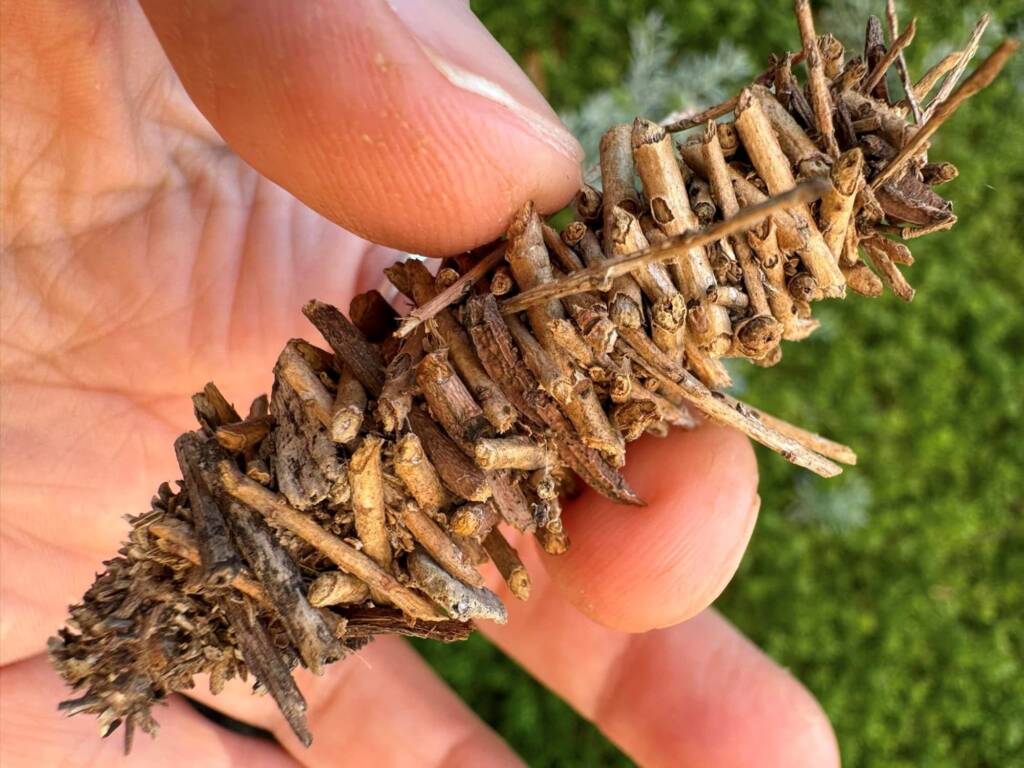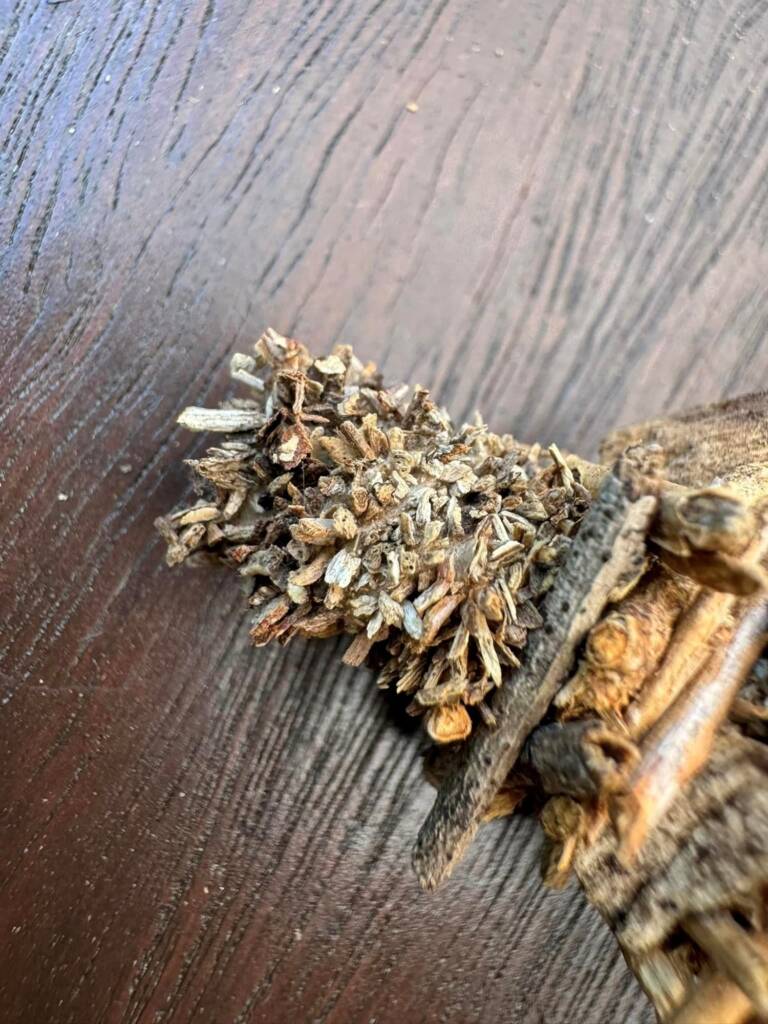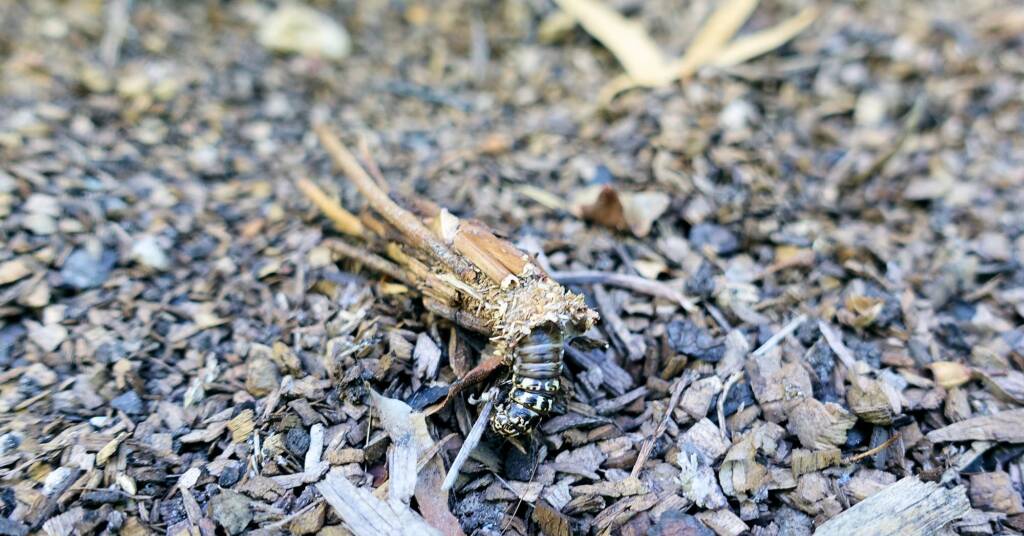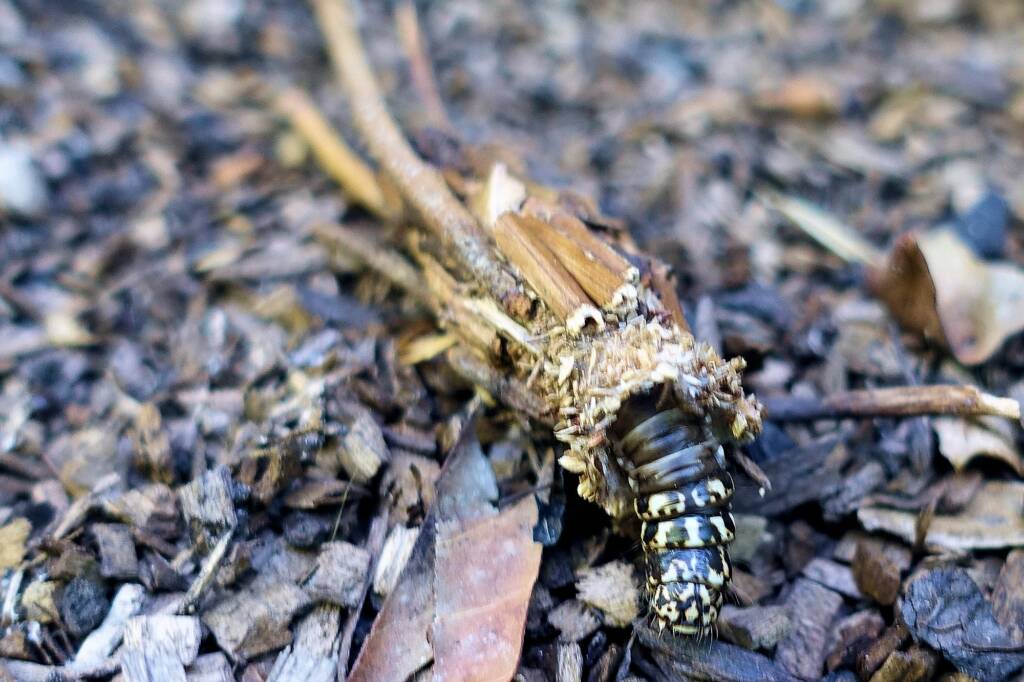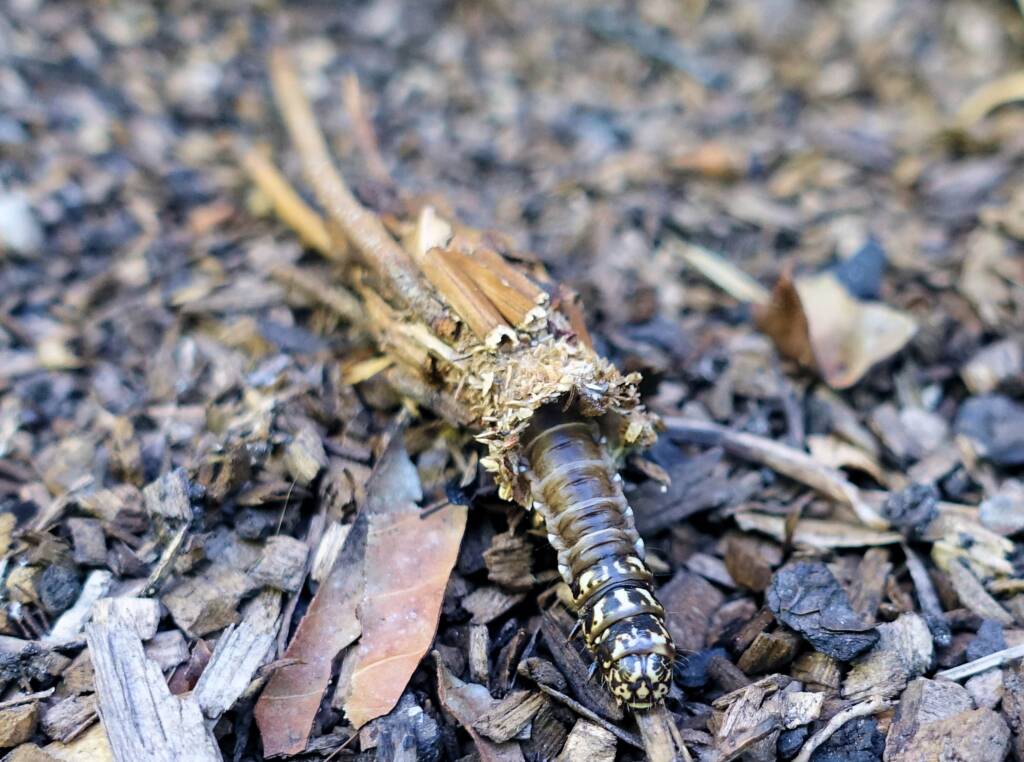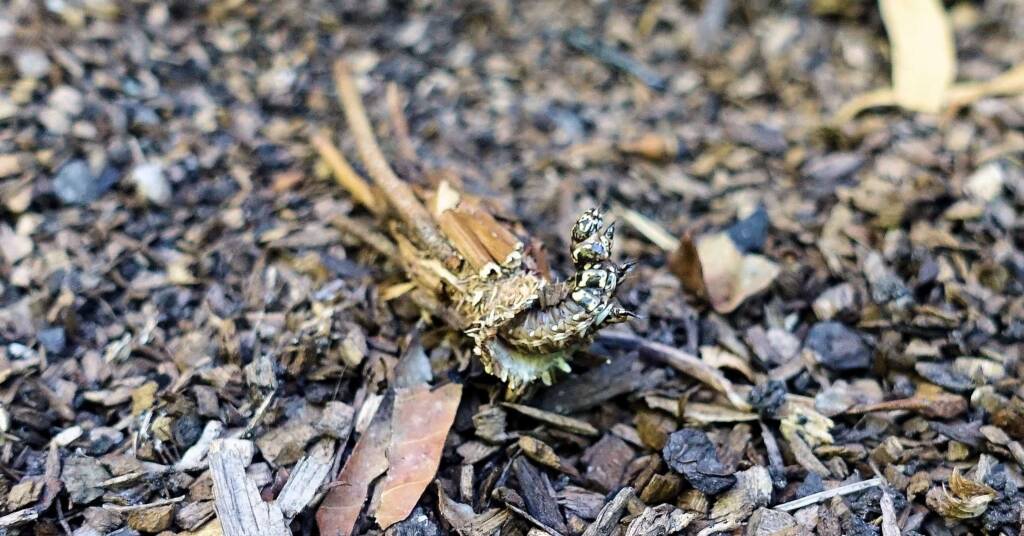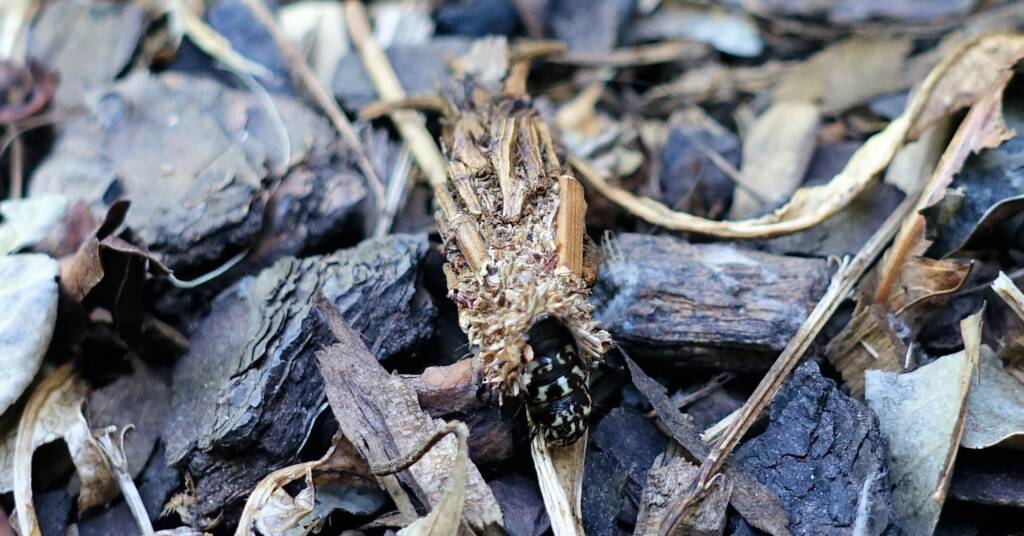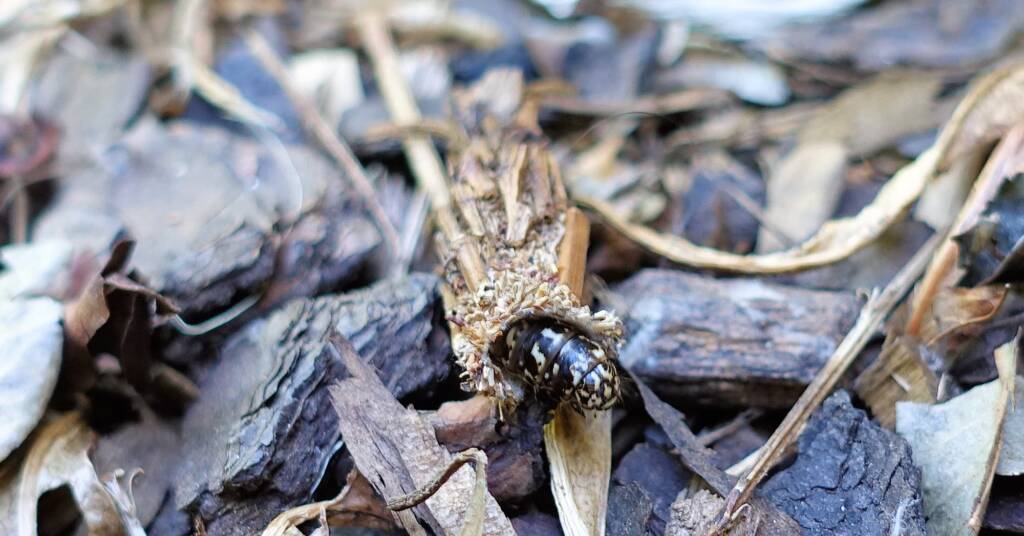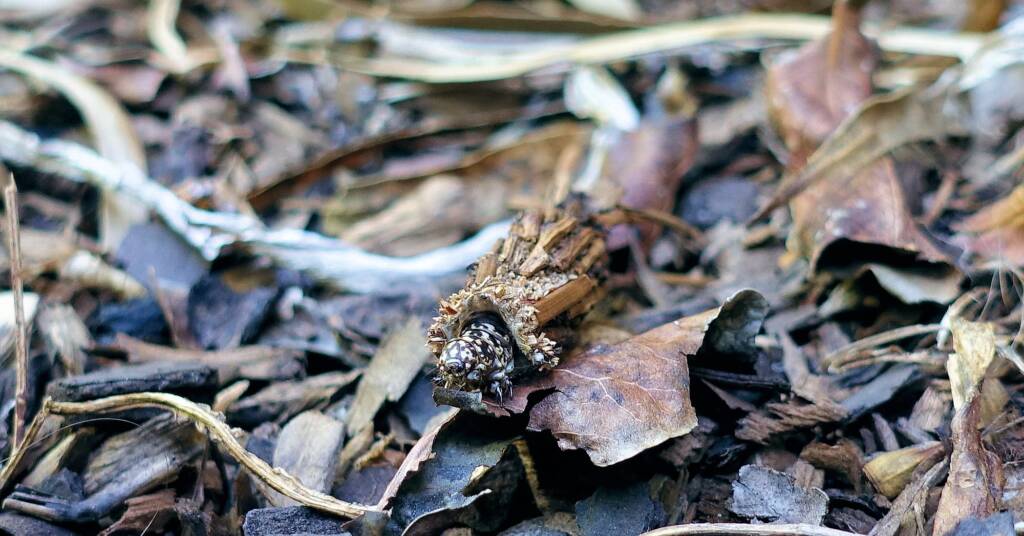Case Moths (Variety of Cocoons)in the garden
There are a number of species of caterpillars/moths that build a casing around themselves, often using silk by which they adhere material collected from their surrounding environment, for camouflage and safety.
They are known collectively as Case Moths, Bag Moths, Bagworms, these being just some of their more common names. Other common names may reflect the material or shape of the casing such as Leaf Case Moths and Ribbed Case Moths.
These casings come in different sizes, depending on the size of the caterpillar species and the instar stage of their development. Whilst there are some species that use only or predominately silk in their casing, most species use silk with other material depending on the region they come from and what is available in their surrounding environment. The material used in the construction of the casing can be plant material such as leaf parts, small stems and twigs (sometimes solely twigs or a mixture of leaf and twigs) or in some species they use grains of sand and tiny stones in their construction.

Some individuals within a specie of case moths may have slight variation to the construction of the casing, using what is available within their immediate surrounding environment, being restricted by what type of plants there are and the leaves and plant seed available. Often the caterpillar will use the plant material from the plant they are feeding on.
Some of these moths have been identified to the species, although there are many more that have not been identified to species. Whilst most of these insects belong to the family Psychidae, some may belong to other families such as Tineidae. There is thought to be over 1,300 known species of Psychidae spread across 240 genera worldwide, of which at least 350 species are in Australia.
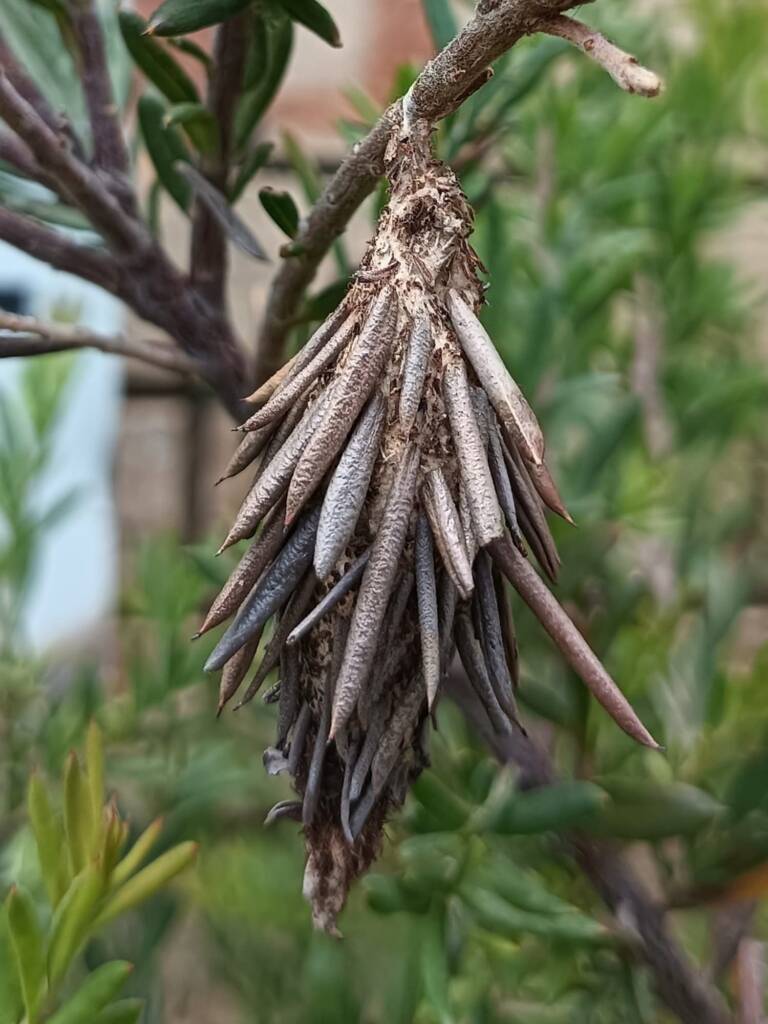
Following are examples of the different types of casing to be found between these commonly grouped caterpillars/moths:
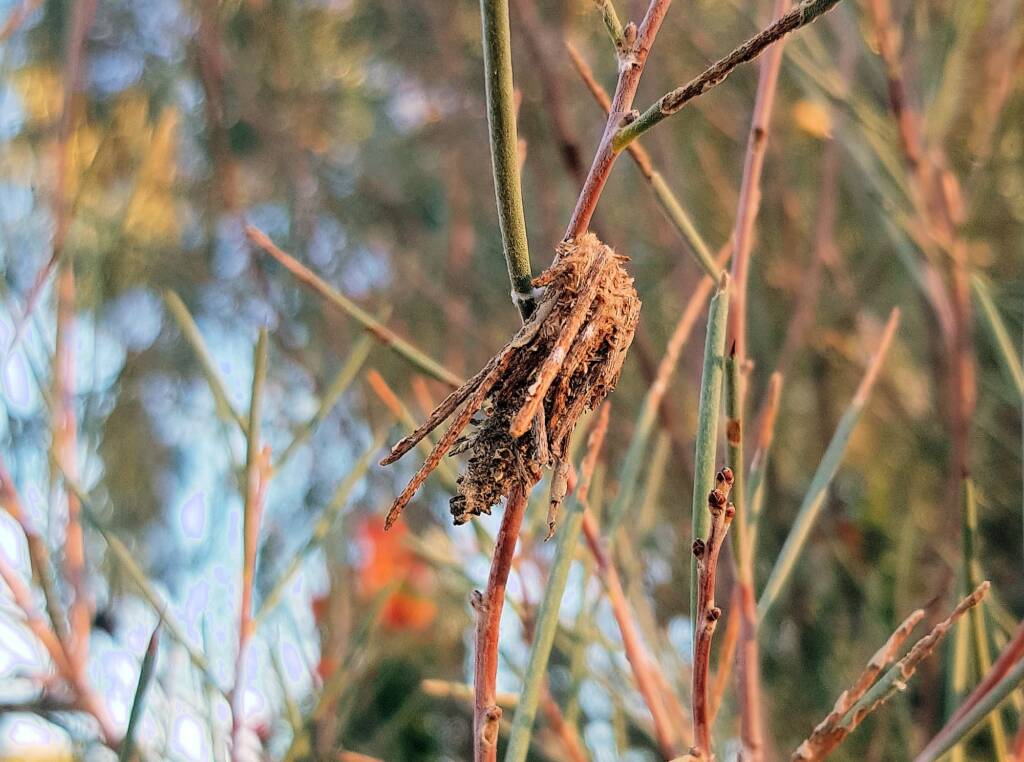
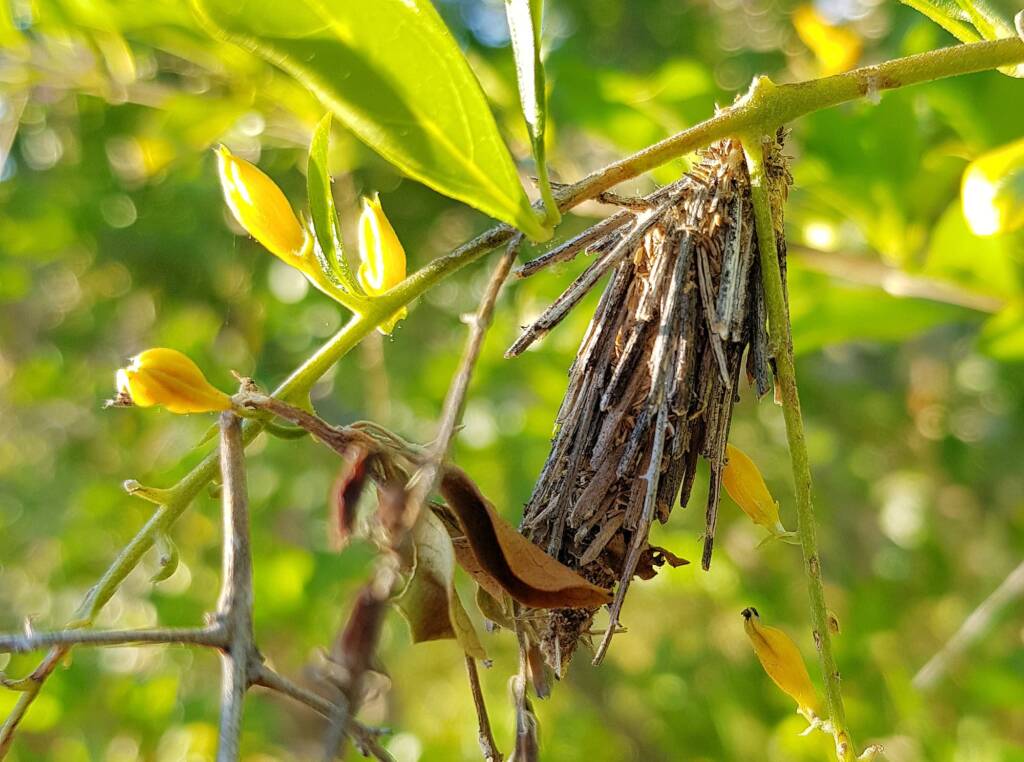
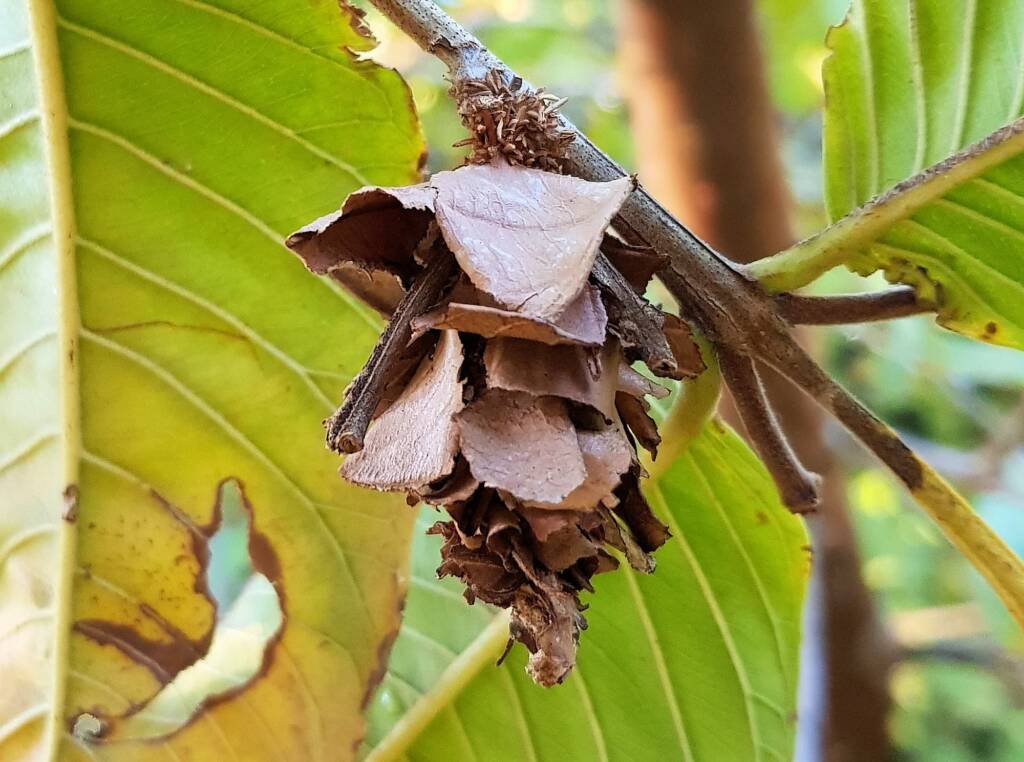
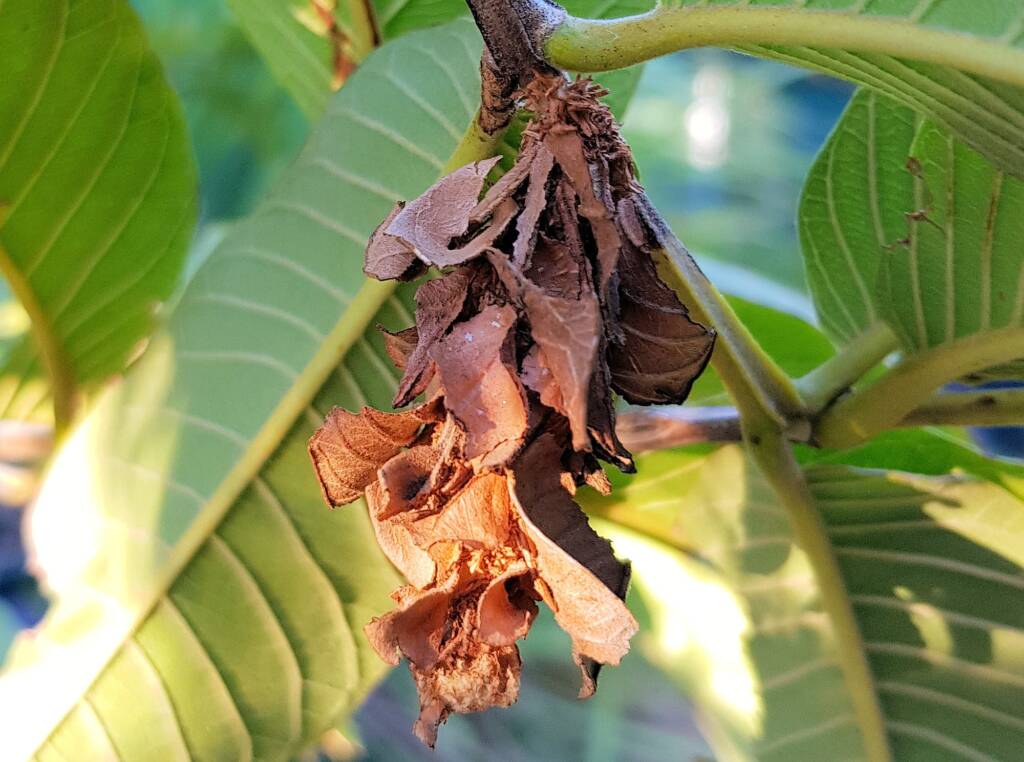
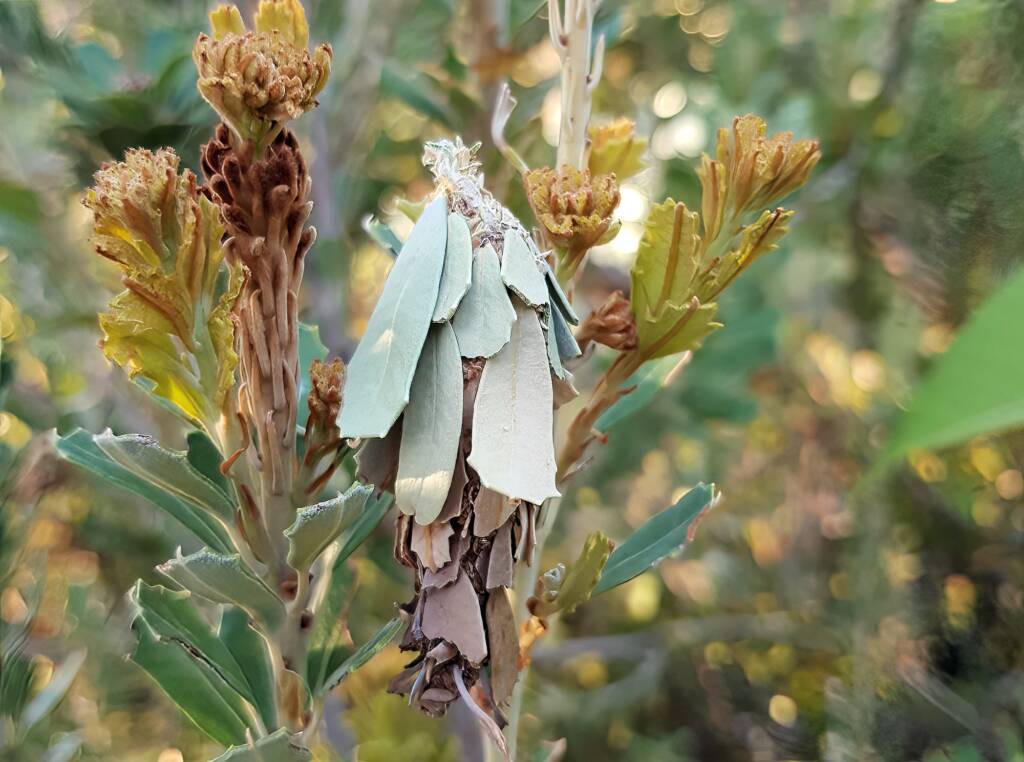
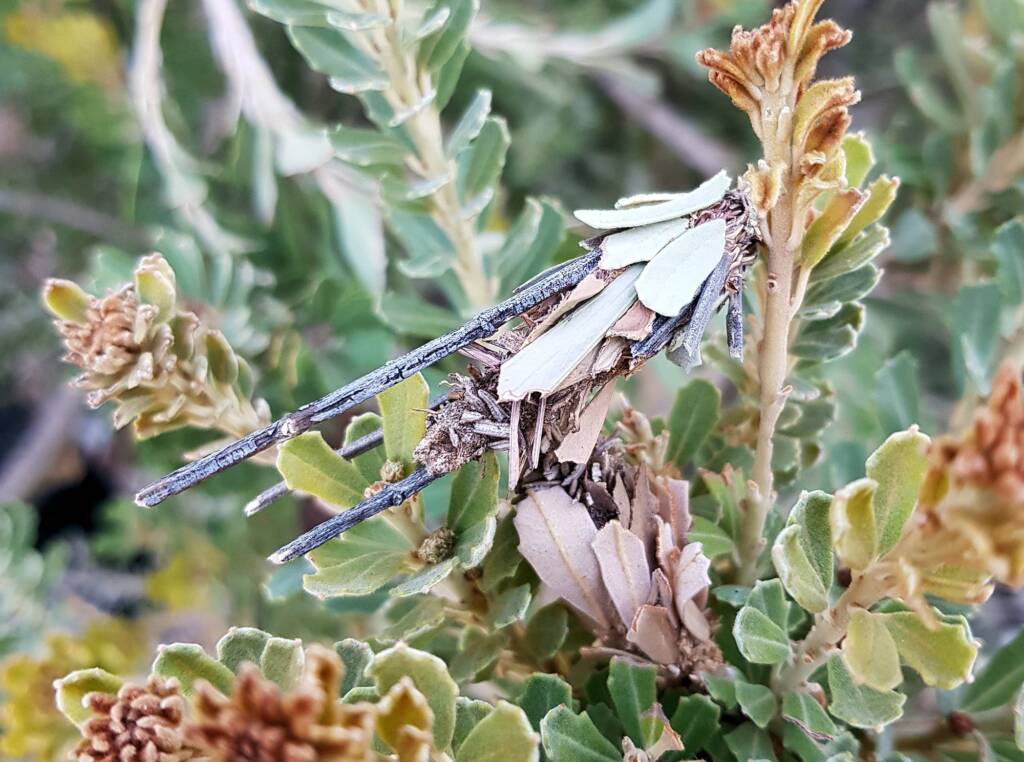

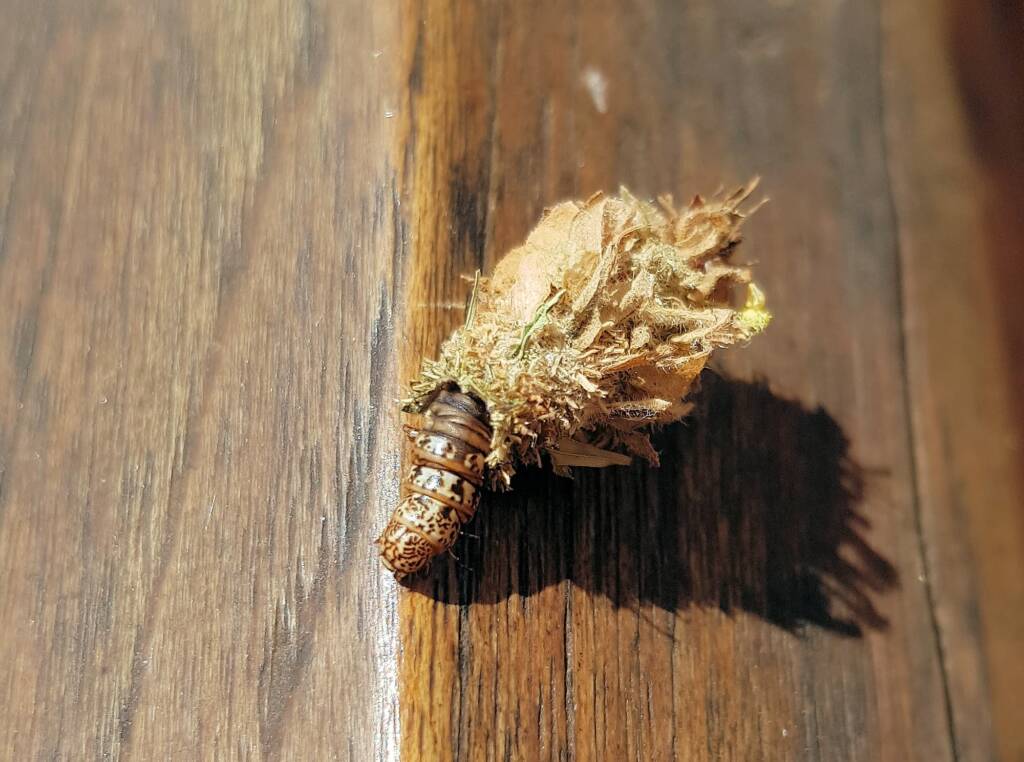
In Central Australia, there are several species of Case Moths, common species being the Leafy Case Moth (Hyalarcta huebneri) and the Ribbed Case Moth (Hyalarcta nigrescens). There are also a number of species that belong to the genus Lomera.
The Ribbed Case Moth has a case that consists of a silken bag and unlike others is not decorated with plant material, instead it has several ridged ribs running along its length.
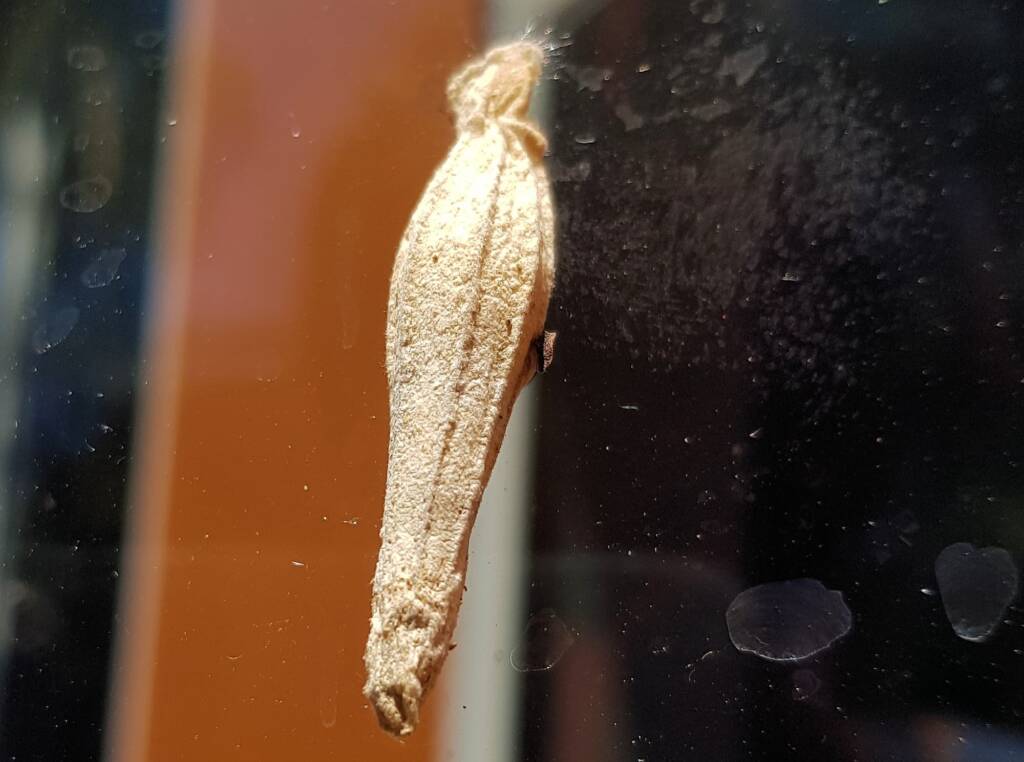
The Leafy Case Moth uses small pieces of leaf from the host plant to decorate the case, whilst other Stick Moths use pieces of stems and twigs, the species Clania lewinii, is also commonly known as the Faggot Case Moth and constructs a case using twigs that are parallel to the axis of the case.


The Saunders’ Case Moth (Metura elongatus) in their early instar stage, use bits of leaf matter. As they grow in their case, they attach parallel short twigs over the surface of the case. They are found mainly along the east coast of Australia, from Queensland down to Victoria and even Tasmania.

Common name
Known collectively as Case Moths, Leaf Case Moth, Leafy Case Moth, Bagworms, Bag Moths, Faggot Case Moth, Stick Case Moth, Ribbed Case Moth, these being just some of the common names applied, often based on the material used to construct the casing.
Many species of case moth caterpillars feed on plants, whilst others are known to feed on lichens. You can often see them dragging their protective case along the ground, looking for their food plant, a trunk of a shrub or tree to climb up and when ready to pupate, will search for a spot to attach one end of their protective case to a surface such as the shrub/tree they are eating from, with silk and hang there. They have also been seen attached to walls and other human made surfaces.
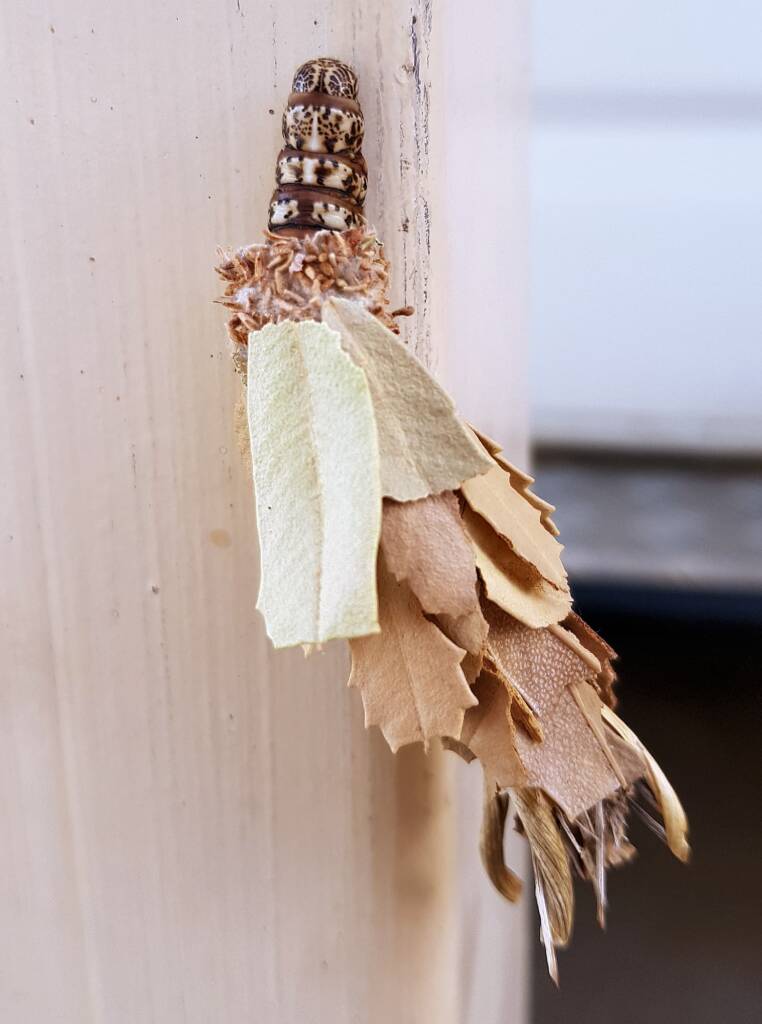
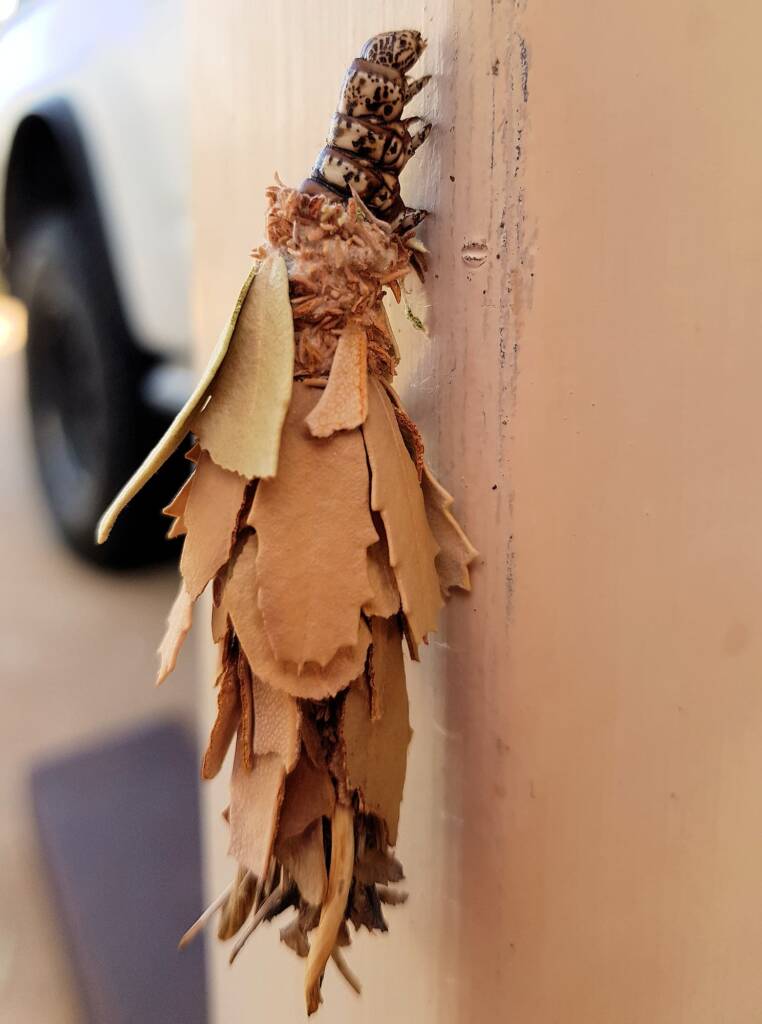
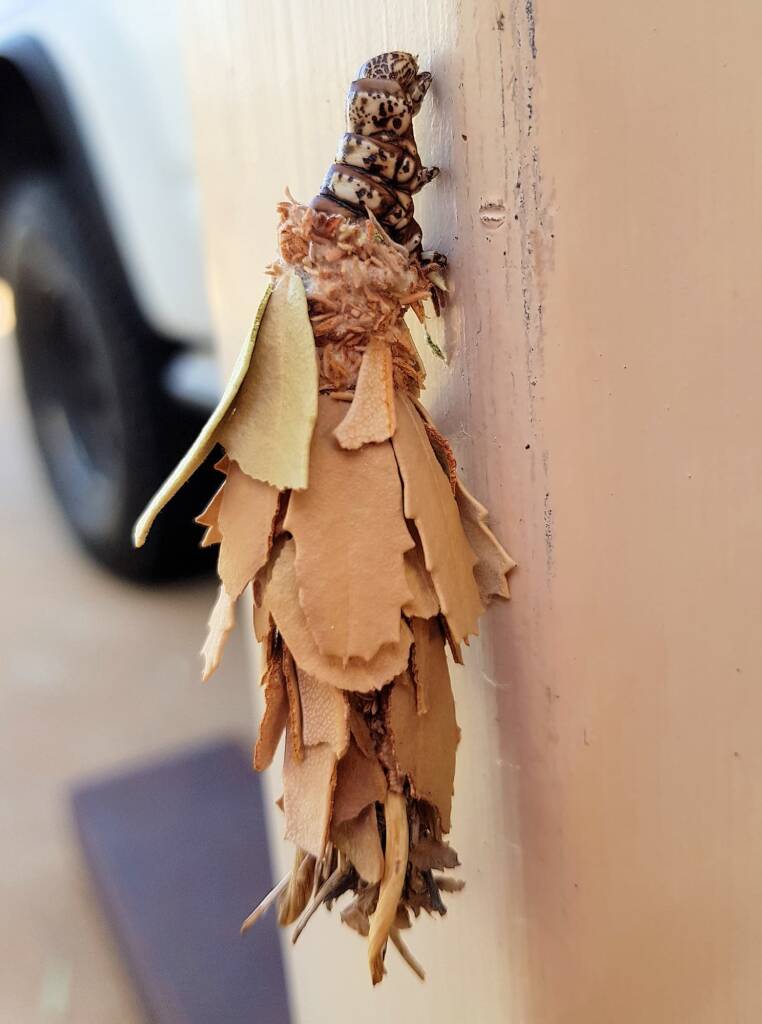


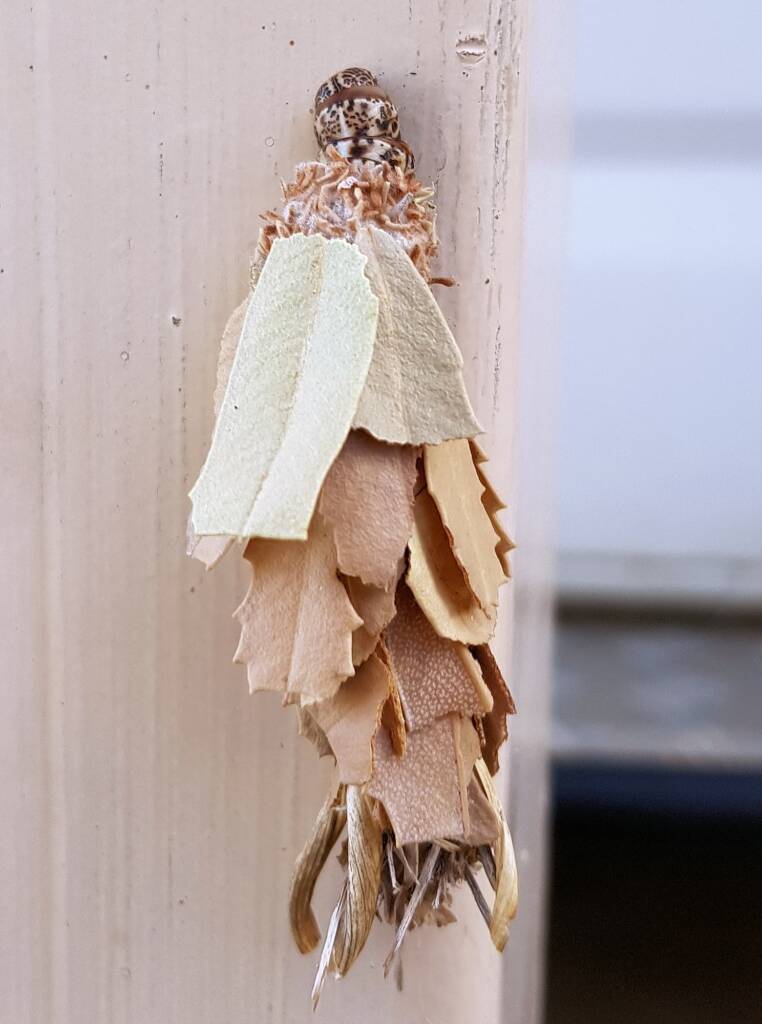
The caterpillar is a very skilled climber and is able to climb any surface by creating a silk ladder attached to the surface they are climbing.
The following case moth cocoon was found in the garden in Cowaramup WA.
The following images are of what is thought to belong to the family Lomera, making its way along the ground to a shrub or tree where it will climb up and fix itself to a spot where it can most likely pupate.
Pupation can be just a few weeks to a few months depending on the season and the weather. The female adult has no wings and remains in the case. The male has short wings with a longish abdomen, that allows it to mate with the female who remain inside her case, where she lays her eggs.
The discarded casing is left after the moth pupates.
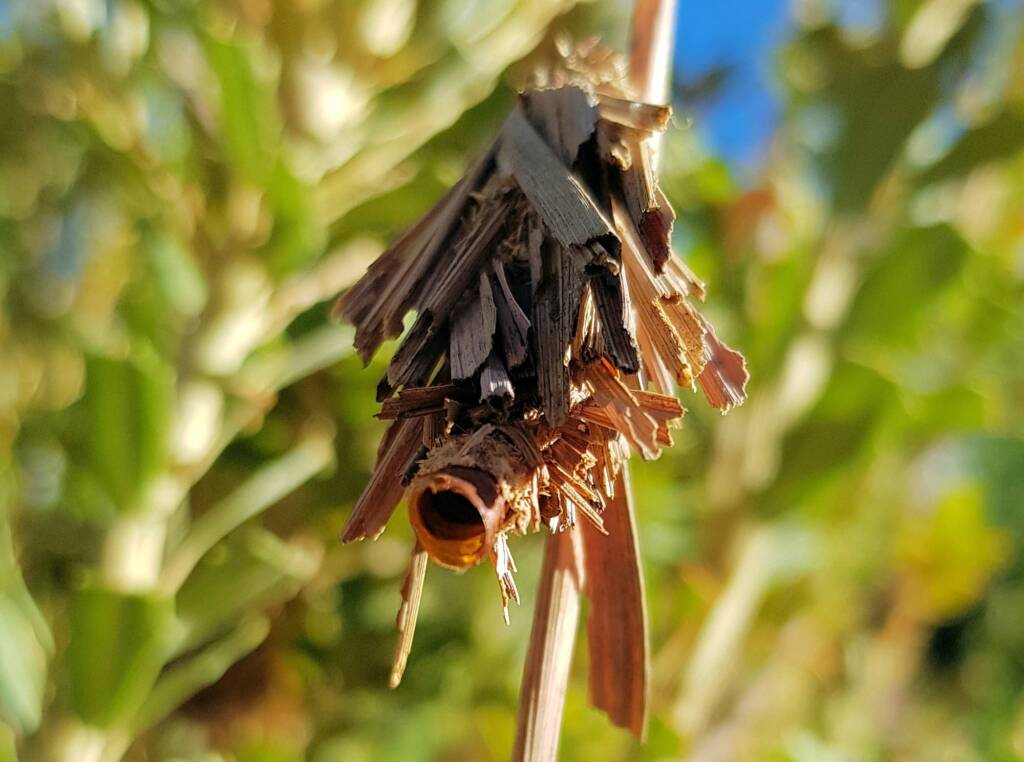
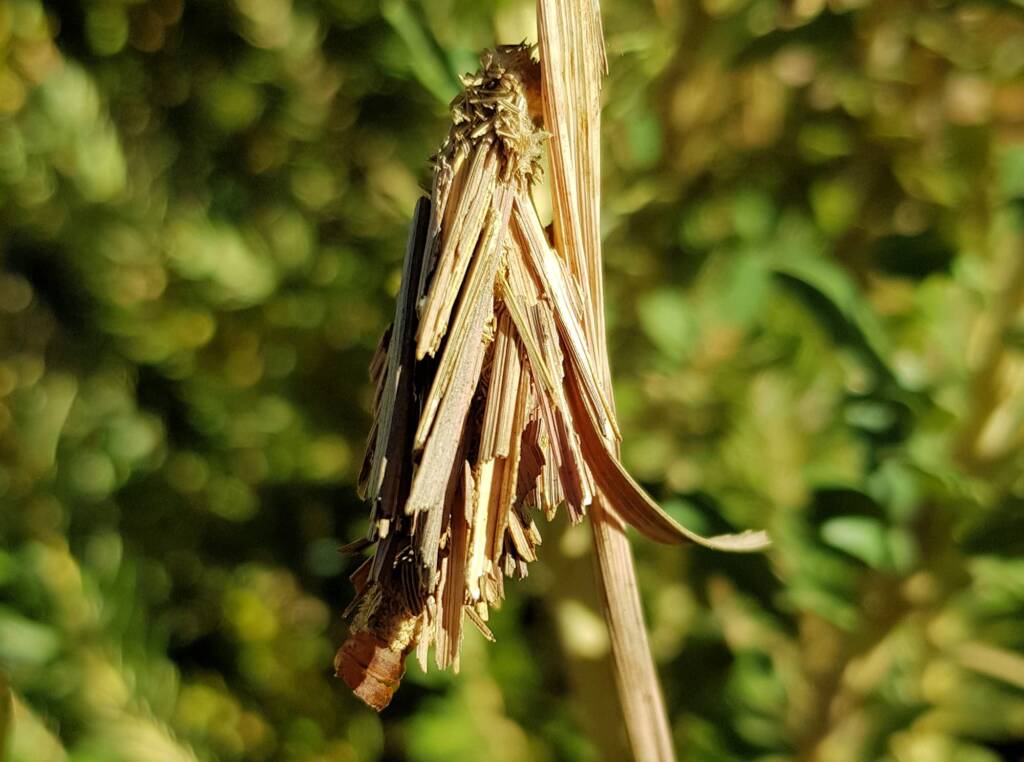
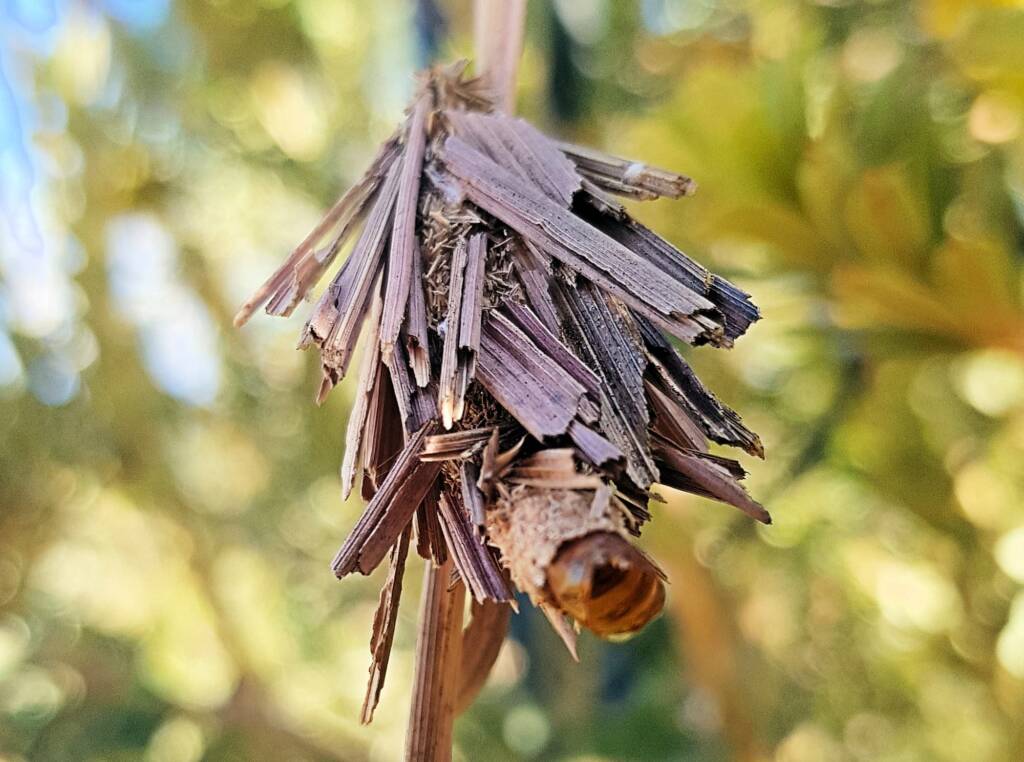
The following is thought to be the early instar of the Ribbed Case Moth (Hyalarcta nigrescens). You can just see the distinct ribs beginning to form.
Many thanks to Leonie Kirchmajer of the Entomology Australia “Invertebratology” Facebook group for IDing this species Hyalarcta nigrescens.
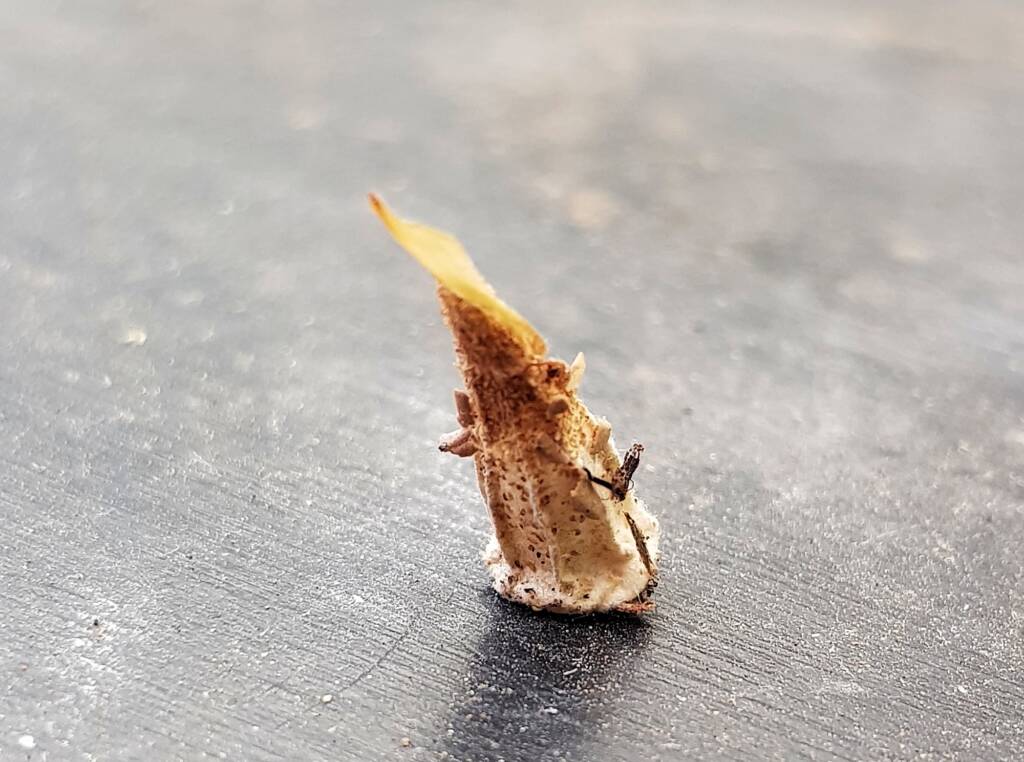
Check out the Footnote & References below for more information.
This page replaces the page Leaf Case Moth.
- Scientific classification
- Kingdom: Animalia
- Phylum: Arthropoda
- Class: Insecta
- Order: Lepidoptera
- Family: Psychidae
- Subfamily: Oiketicinae
- Genus:
- Hyalarcta
- Lomera
- Scientific classification
- Kingdom: Animalia
- Phylum: Arthropoda
- Class: Insecta
- Order: Lepidoptera
- Superfamily: Tineoidea
- Family: Psychidae
- Diversity:
- 10 subfamilies, 241 genera and 1,350 species

Footnote & References
- Case Moths (Family Psychidae), iNaturalistAU, https://inaturalist.ala.org.au/taxa/61415-Psychidae
- Psychidae, Bagworm Moth, Atlas of Living Australia, https://bie.ala.org.au/species/https://biodiversity.org.au/afd/taxa/1a7fdf19-c0f2-4ace-ab9c-8e3a602615fa
- Some Caterpillar cases of PSYCHIDAE in Australia, Bagworms, Case Moths, TINEOIDEA, by Don Herbison-Evans and Stella Crossley, Coffs Harbour Butterfly House, http://lepidoptera.butterflyhouse.com.au/psyc/psyc-cases.html
- Some photos of Caterpillars of TINEIDAE in Australia, Clothes Moths, Coffs Harbour Butterfly House, http://lepidoptera.butterflyhouse.com.au/tine/tine-cats.html
- PSYCHIDAE in Australia, Bagworms, Case Moths, Coffs Harbour Butterfly House, http://lepidoptera.butterflyhouse.com.au/psyc/psychidae.html
- Saunders’ Case Moth (Metura elongatus), Australian Museum, https://australian.museum/learn/animals/insects/case-moths/
- Bagworm moth, https://en.wikipedia.org/wiki/Bagworm_moth (last visited July 4, 2021)
- List of moths of Australia (Psychidae), https://en.wikipedia.org/wiki/List_of_moths_of_Australia_(Psychidae) (last visited Mar. 3, 2022)
- Case Moths, Bag Moths – Family Psychidae, Moths, Brisbane Insects and Spiders, https://www.brisbaneinsects.com/brisbane_moths/PSYCHIDAE.htm
- 5 Mysterious Structures from the World’s Smallest Architects, by Nicky Bay, Nicky Bay’s Macro Photography, https://www.nickybay.com/5-mysterious-structures-world-smallest-architects/
- Angle of dangle, 29 April 2015, NewScientist, https://www.newscientist.com/lastword/mg22630191-600-angle-of-dangle/
Case Moths (Variety of Cocoons)in the garden
MothsMoths Index Aedia arctipennis Anthela guenei (Four-Spot Anthelid Moth) Australian Striped Hawk Moth Bag-shelter Moth (Ochrogaster lunifer) Case Moths (Variety of Cocoons) Coenotes eremophilae Convolvulus Hawk Moth Day Flying Moth Emperor Gum Moth (Opodiphthera eucalypti) Four-spotted Cup Moth Green-blotched Moth (Cosmodes elegans) Leaf Case Moth Mistletoe Emperor Moth Plume Moth Rattlepod Moth (Utetheisa) Ribbed Case Moth Sameodes cancellalis Saunders’ Case Moth (Metura elongatus) White-spotted Owl-Moth



